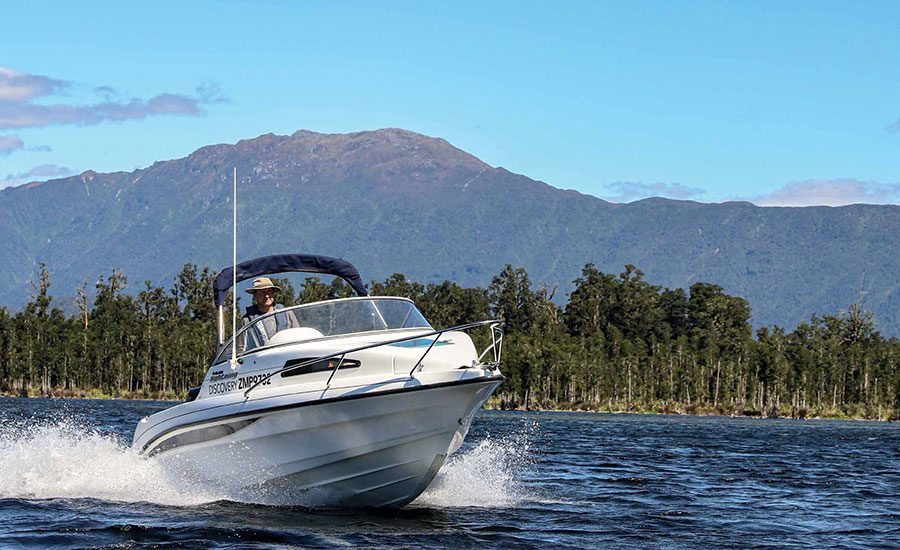

Situated on the West Coast of the South Island, about three hours from Christchurch, Lake Brunner is a scenic and family-oriented South Island boating destination.
“This is an absolutely stunning place to boat,” said my 16-year-old son Will.
He wasn’t wrong, of course. The sun was receding over the tranquil, tannin-stained waters while cicadas chirped loudly, and native birds called from the ancient podocarp forest. We were fishing a small part of a lake renowned for its exceptional brown trout – an equally popular boating destination for West Coasters, Cantabrians and those from further afield.
Will was flicking small lures on a spinning rod from his jetski, casting across the weed beds and beginning a slow retrieve back towards the ski. Fifty metres away I stood off the back of the boat and used a fly rod to work the shallow water, using the shade of the forest backdrop to cut the glare so I could spot any cruising trout. Sure enough, the trout were there – slabs of gold mooching methodically, ensuring we concentrated on them rather than the scenic backdrop.

Lake Brunner has high-quality facilities that allow boaties to access all corners and the many opportunities this 40km2 body of water provides. The main boat ramp is situated at the small township of Moana, built to a high standard with three lanes, a floating jetty, breakwater and good parking. There’s a $10.25 charge to use this ramp, which over peak holiday periods can be very busy.
There are also smaller, more basic boat ramps at Iveagh Bay (a 10-minute drive from Moana) and Mitchells (30 minutes driving), but while both are small, they’re in excellent condition and simple to use. They rely on honesty for a $5 payment.
The Iveagh Bay boat ramp is situated in a small lagoon that provides easy access to the larger, but well-sheltered bay itself with its long, pebbly beach. This is an incredibly popular and scenic spot for watersports and picnicking.
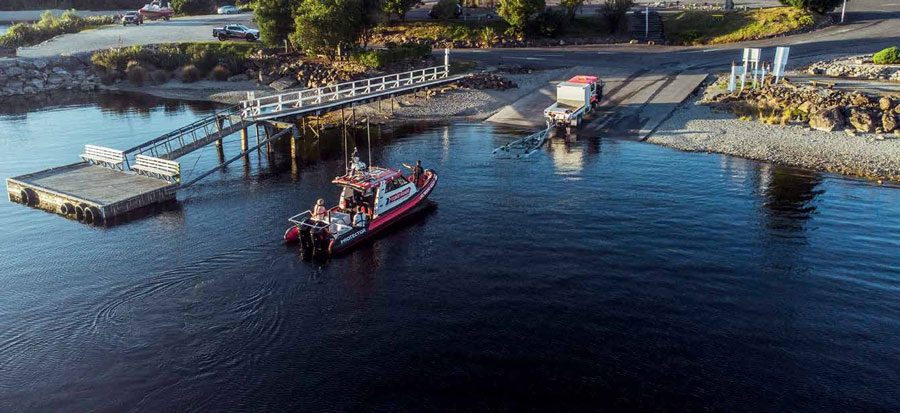
Wakeboarding, skiing, biscuiting and other waterborne activities are highly popular on the lake so areas such as Iveagh Bay can be extremely busy during holidays and weekends – skippers should constantly monitor the water around them to keep everyone safe. Bain Bay, with its beautiful long beach, picnic area and camp sites, on the other side of the lake from Iveagh Bay is another popular watersports location.
Moana itself consists mostly of holiday homes, although the numbers of permanent residents has risen over the years. There’s a plethora of accommodation options, ranging from high-end, self-contained units to motorcamps and shared bunkrooms. There’s a well-appointed and friendly marine shop and service centre, a fuel stop, grocery shop and laundry. There’s also boat storage. Greymouth is just over 30 minutes away.
The increased popularity and improved accessibility of the lake and Moana village has a lot to do with the construction of the Otira Viaduct across Arthurs Pass almost 25 years ago. This 440m stretch of highway made it a lot easier to travel from Canterbury to the West Coast. It is considered quite an engineering feat, constructed to alleviate problems with major rockfalls above and below the winding and steep stretch of old highway. Nonetheless, with a 12o gradient, the viaduct can be a challenge for your towing vehicle and its brakes, but it has certainly made it that much easier for drivers – and boats – to access the West Coast.
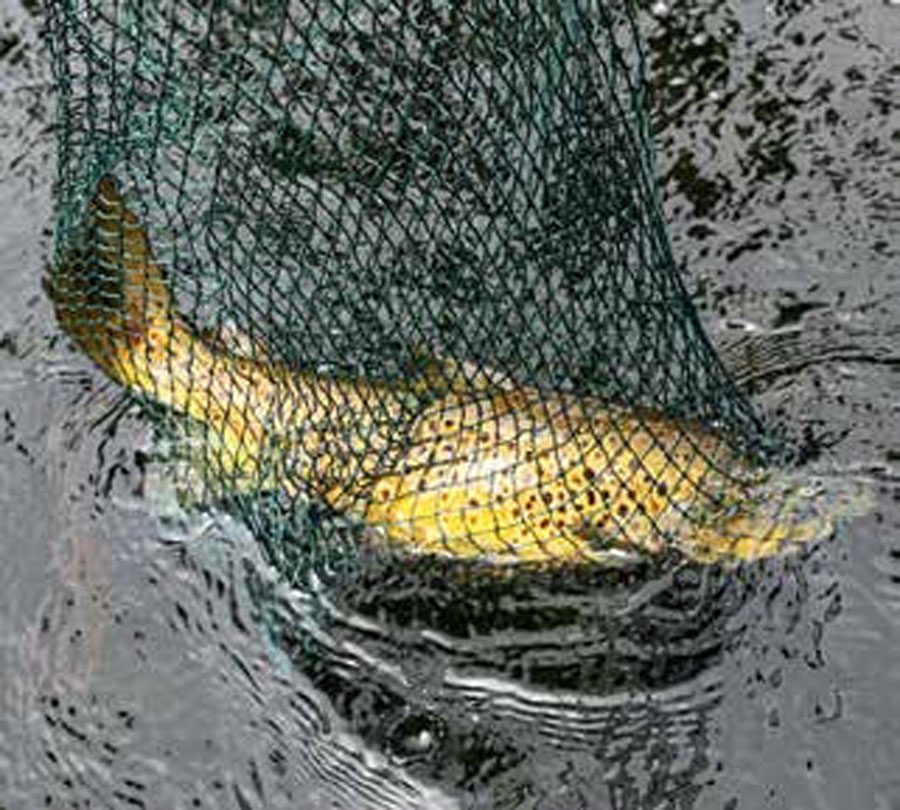
As mentioned, Lake Brunner is a renowned destination for trout fishing. Fish rise freely around the lake which is largely surrounded by native bush, so there’s an endless supply of terrestrial food for the resident trout population. The lake holds brown trout and very limited numbers of rainbows with sizes generally ranging between 1-2kg, although much larger trout are caught regularly.
Trolling and harling work well, both fishing techniques popular with boaties, but so too does casting from the shore. Personally, I prefer working the shallows with a fly rod. If I’m alone or hosting anglers on my boat, I’ll position the vessel offshore to allow casting towards land. Using a jetski, dinghy or canoe makes it even easier to effectively work the shallows. The native bush backdrop cuts the glare off the water so usually it’s a case of spotting, and then ambushing, individual trout cruising along on their beats. A suitable fly, nymph or lure cast slightly ahead of the fish often elicits a response. In mid-summer, when the cicadas sing, the fishing can be exceptional – and very exciting.
It’s not just Lake Brunner that hosts wonderful fishing – another substantial article could be dedicated to the rivers and small lakes in the area. The Arnold River – which exits the lake – has trout throughout its length, while Lake Poerua, just 20 minutes away, is also a worthy alternative fishing venue to Brunner.
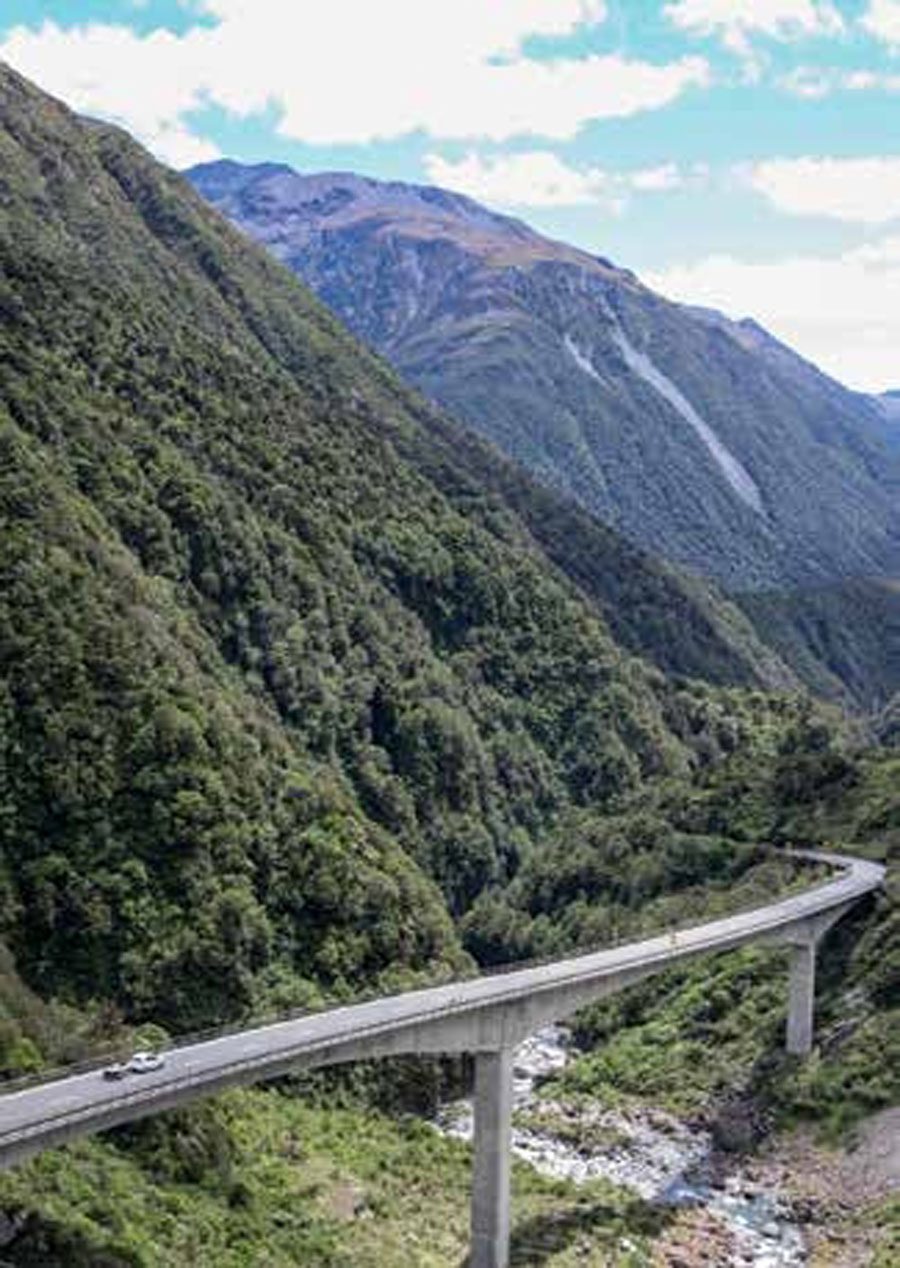
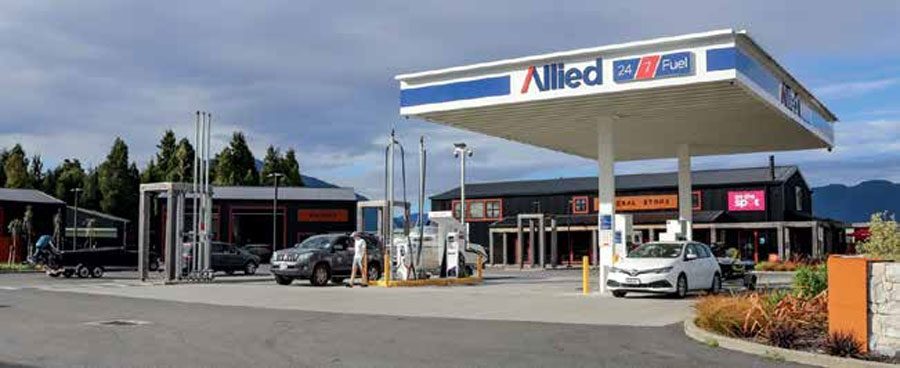
Lake Brunner has plenty of other options for the family if fishing and watersports aren’t part of your agenda. There’s no shortage of small beaches for picnics and swimming, often surrounded by stands of native podocarp forest hundreds of years old and full of native birds. A picnic here makes you feel like you’ve been transported to another mystical world. However, the lake level varies significantly, depending on weather patterns, so many of these beaches are covered when the lake is high. Likewise, when it’s low – as it was last summer – there are plenty of beaches, but some areas of lake are inaccessible to vessels due to weed beds and submerged logs just below the surface.
There are also plenty of well-marked, family-oriented walks around the lake and in the nearby vicinity.
Although the Maori name for the lake is often given as just ‘Moana’, several names are recorded. The first, Kōtuku Moana, translates as ‘sea of herons’, referencing the white heron known to Maori as kōtuku. The second name, Kōtukuwhakaoka, is shared with the Arnold River, while the lake’s name was rendered slightly differently, as Kōtuku-Whakaoho, in the Ngai Tahu Claims Settlement Act 1998.
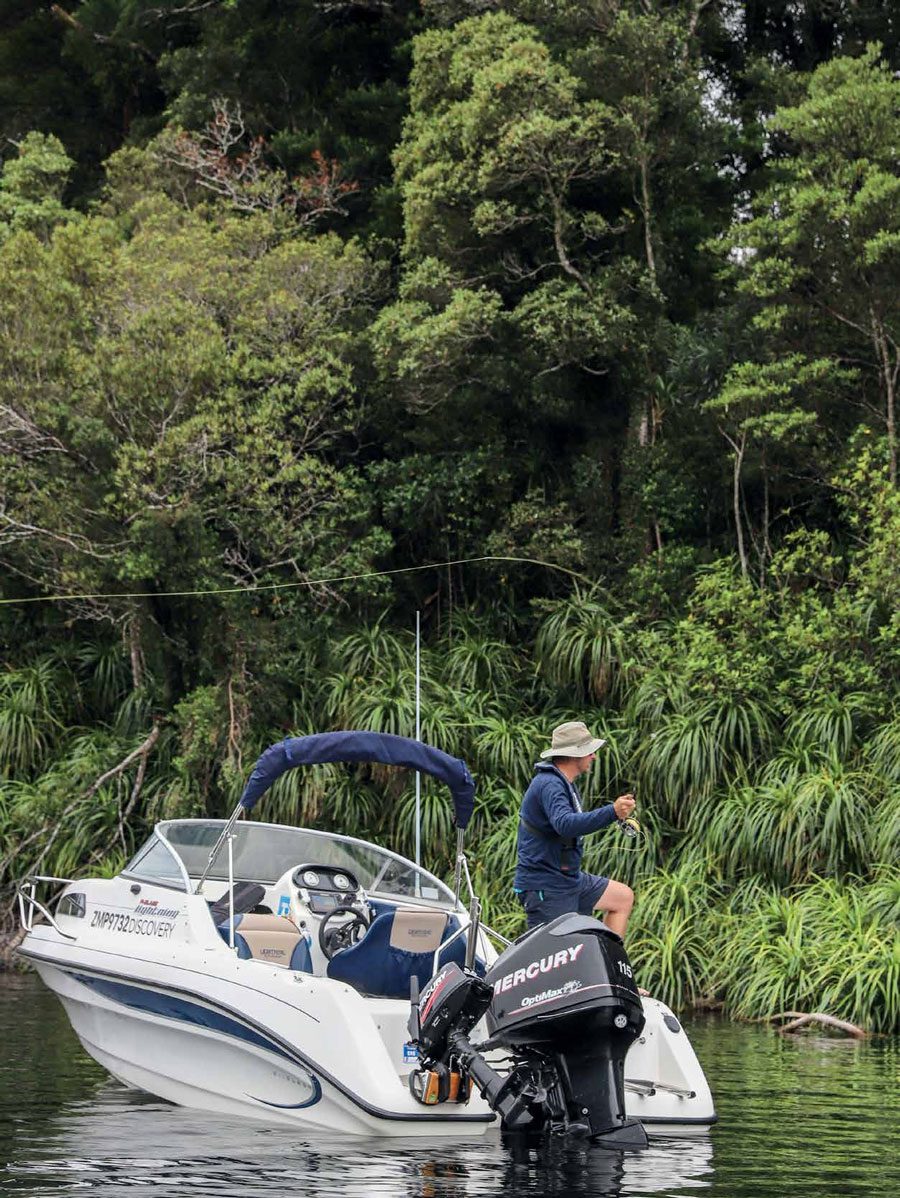
The European name commemorates Thomas Brunner who, in 1848, became the first European to see the lake during his 550-day exploration of the region with Maori guides. The area was important for early Maori and has had a rich history of sawmilling and dairy farming since European settlement.
The weather on the lake can change very quickly, but this is usual for the entire West Coast region. In many instances boaties can see inclement weather or showers approaching from the west, giving them time to prepare. Easterly winds, while not that common, can make the lake very choppy, which is unpleasant in a small vessel. I’ve been caught out a few times with my young family on board in some truly dreadful weather, which resulted in some anxiety-laden, slow and uncomfortable trips back to the boat ramp. I remember one early October day when our kids were young, getting caught out badly; wind and hail pounded the boat’s hull and lightning and thunder burst around us. But 30 minutes later the sun was shining and the lake had returned to its restful state. BNZ
Further information www.westcoast.co.nz/visit/plan-your-trip/lake-brunner/
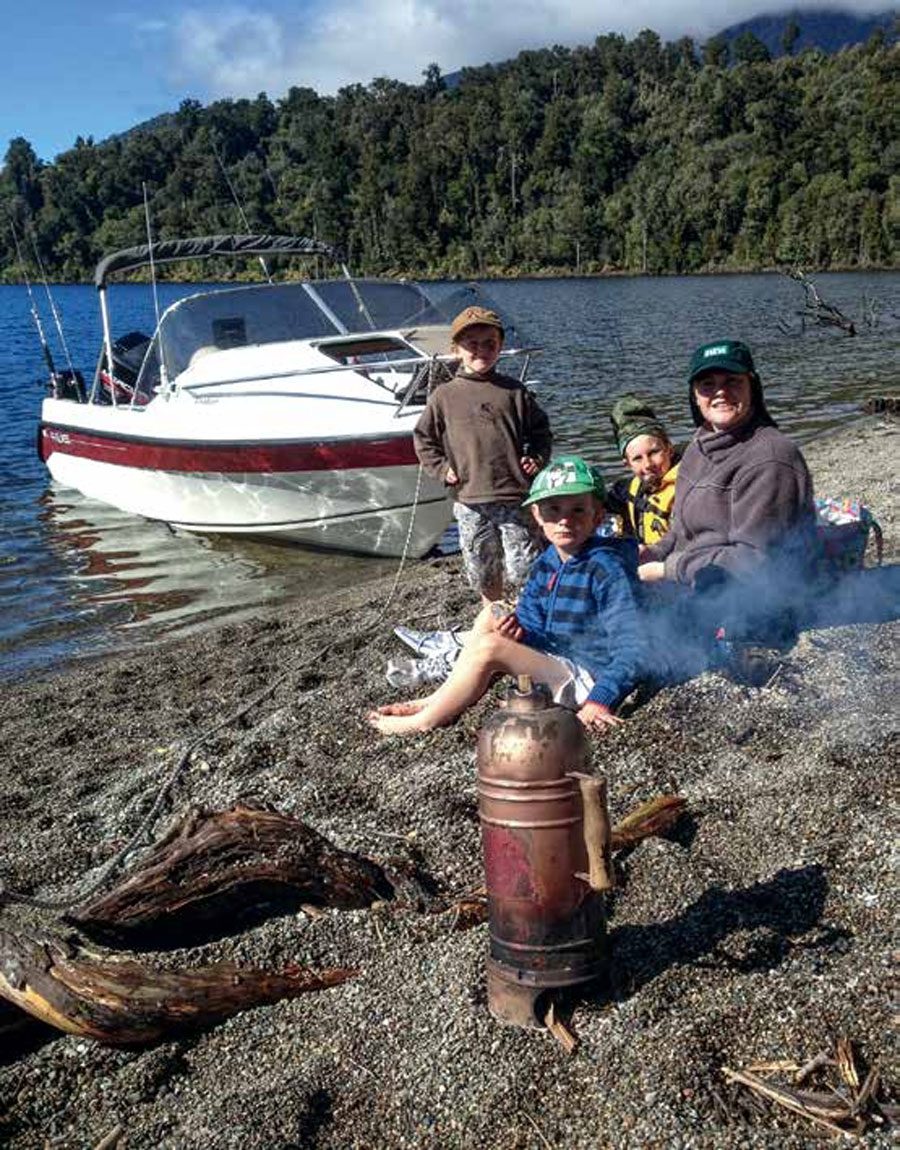
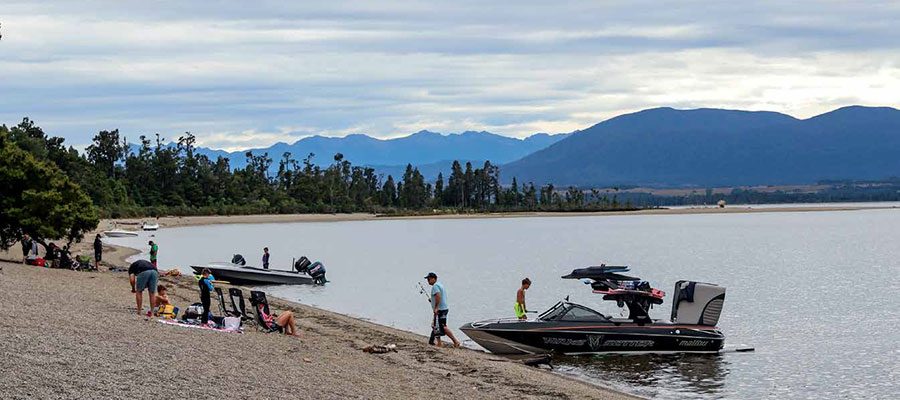
COASTGUARD ON BRUNNER
Boaties using the lake can rest assured that help is close at hand if ever required. Coastguard Lake Brunner was created in 2004 and continues to provide an exceptional voluntary service on the lake and beyond. President Mark Bolland says they have nine active members and two recruits but are looking to build that number.
“One of our goals this year is to find 10 new members with a focus on those who reside in Moana, or those who have extended holidays in the area. We are particularly interested in anyone with a commercial skipper’s qualification, as there is recognition of prior learning to qualify in a shorter time frame,” he says.
“The backgrounds of our members are as different as the West Coast – we have business owners, the local fire chief, professional people and retirees. We welcome anyone who shares our passion for saving lives.”
While Coastguard Lake Brunner typically deals with a low number of incidences in any one year, they are slowly increasing as the lake gets busier.
“Recent tasks include responding to a sinking jet-ski and a lakeside search for a missing person. We get the usual boat and jet-ski mechanical issues that result in a tow, but you just don’t know what’s around the corner and we are trained and ready for most situations.”

And they need to be – the lake can be exceptionally busy with more than 200 vessels, plus jet-skis, on the water at peak times of the year.
“The rules for safe boating on Lake Brunner are the same as anywhere else, and while the West Coast is perceived as a relaxed location, we do take safety seriously because when things go wrong, the consequences can be quite devastating. Some of the issues we are seeing include people travelling in the boat down to the slipway and excessive speed near shore. We recommend everyone refresh themselves around the five-knot rule.”
In 2022 Coastguard Lake Brunner received one of the Lottosponsored America’s Cup 9m support vessels and a tow truck. Mark says the new vessel Lake Brunner Rescue is a game changer in terms of capability for this small but busy unit as well as for SAR partners Coastguard West Coast and Kotuku Surf Life Saving.
“Not only is the new boat larger and more powerful, it has a semienclosed cabin which makes training and operations much more enjoyable in the lake’s changing and often windy weather conditions.
“We operate in one of the most beautiful, but challenging, environments in the country and to quickly respond to an incident we must often navigate winding and narrow West Coast roads, which requires both precision driving and a truck-trailer unit that can take the load. This new boat and truck allows us to serve our community much faster, both by road and across the lakes.”




